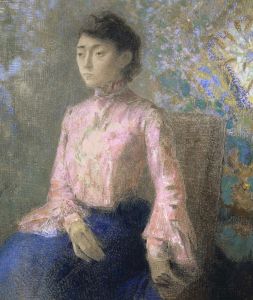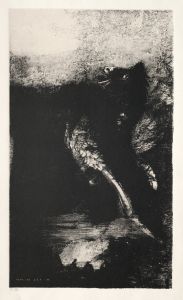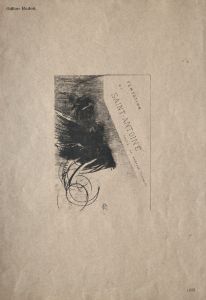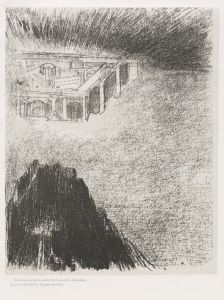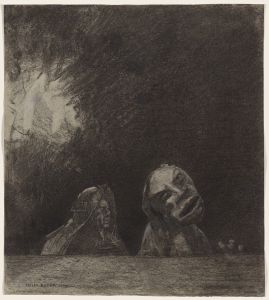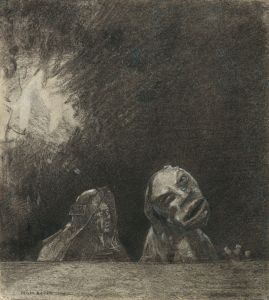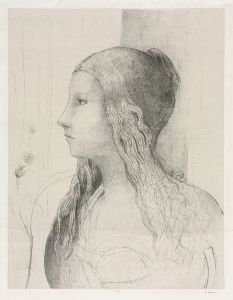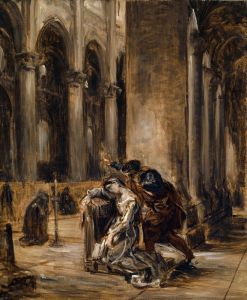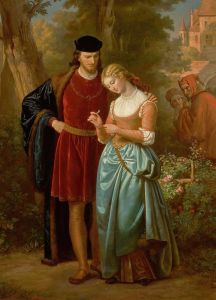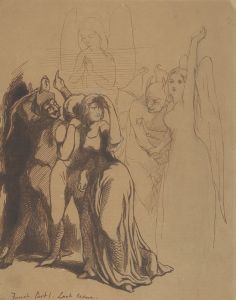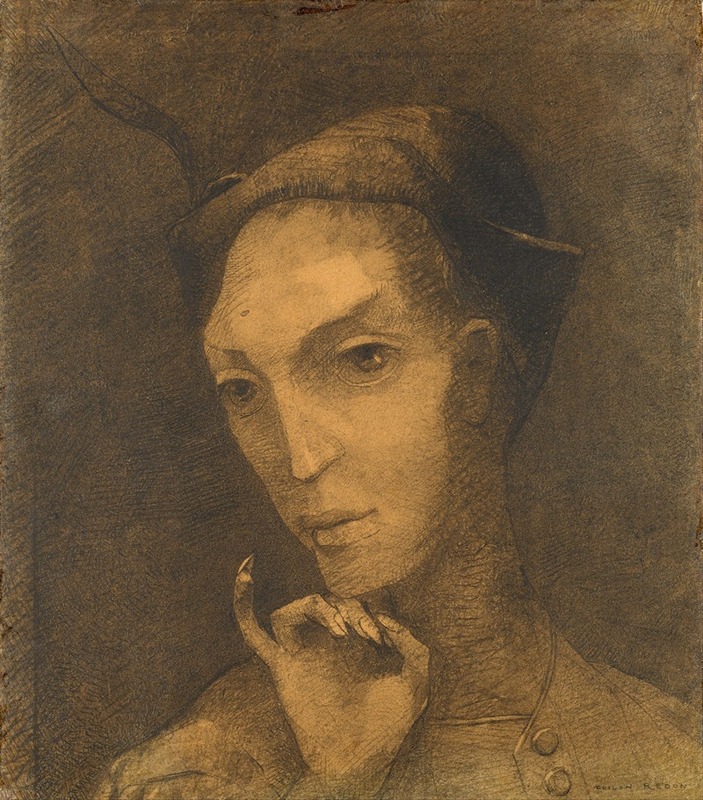
Mephistopheles
A hand-painted replica of Odilon Redon’s masterpiece Mephistopheles, meticulously crafted by professional artists to capture the true essence of the original. Each piece is created with museum-quality canvas and rare mineral pigments, carefully painted by experienced artists with delicate brushstrokes and rich, layered colors to perfectly recreate the texture of the original artwork. Unlike machine-printed reproductions, this hand-painted version brings the painting to life, infused with the artist’s emotions and skill in every stroke. Whether for personal collection or home decoration, it instantly elevates the artistic atmosphere of any space.
"Mephistopheles" is a painting by the French symbolist artist Odilon Redon, created around 1877. Redon, born in 1840, was known for his unique and imaginative works that often delved into the realms of dreams, fantasy, and the subconscious. His art frequently featured mystical and otherworldly themes, and "Mephistopheles" is no exception.
The painting depicts Mephistopheles, a character from German folklore who is best known as the demon in Johann Wolfgang von Goethe's "Faust." In Goethe's play, Mephistopheles is a cunning and malevolent spirit who makes a pact with Faust, offering him unlimited knowledge and worldly pleasures in exchange for his soul. This character has been a popular subject in art and literature, symbolizing the eternal struggle between good and evil.
Redon's portrayal of Mephistopheles is both haunting and enigmatic. The figure is often shown with a sinister expression, embodying the malevolent nature of the character. Redon's use of dark, muted colors and shadowy forms adds to the eerie and mysterious atmosphere of the painting. The background is typically indistinct, focusing the viewer's attention on the figure of Mephistopheles and enhancing the sense of otherworldliness.
Odilon Redon's style is characterized by his use of charcoal and lithography, which allowed him to create intricate details and deep contrasts in his works. "Mephistopheles" is a prime example of his skill in these mediums, showcasing his ability to evoke emotion and intrigue through his art. Redon's interest in the fantastical and the macabre is evident in this piece, as he captures the essence of the demonic figure with a sense of both beauty and dread.
Throughout his career, Redon was influenced by various artistic movements and figures, including the Symbolist movement, which emphasized the expression of ideas and emotions over realistic representation. His work often explored themes of existentialism, spirituality, and the human psyche, making him a significant figure in the transition from 19th-century Romanticism to 20th-century Modernism.
"Mephistopheles" reflects Redon's fascination with the darker aspects of human nature and the supernatural. It is a testament to his ability to blend reality with imagination, creating a piece that is both thought-provoking and visually captivating. The painting remains an important work in Redon's oeuvre, illustrating his contribution to the Symbolist movement and his unique artistic vision.
In summary, "Mephistopheles" by Odilon Redon is a compelling representation of the demonic character from Goethe's "Faust." Through his masterful use of charcoal and lithography, Redon captures the sinister essence of Mephistopheles, creating a work that is both haunting and beautiful. This painting exemplifies Redon's skill in merging the real with the fantastical, making it a significant piece in the history of Symbolist art.





